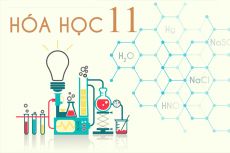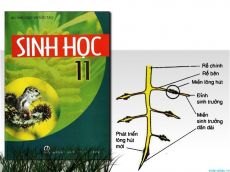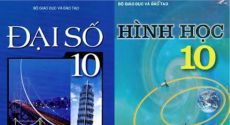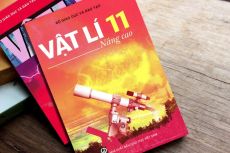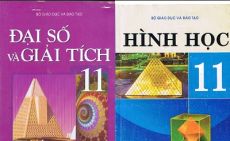Trắc nghiệm Reading Unit 10 lớp 10 Tiếng Anh Lớp 10
-
Câu 1:
Read the text below and select the best option for each blank. Write your answers (A, B, C, or D) in the box provided.
Here are some ways to help you to get a good night’s sleep. Firstly, don’t try too hard to (1)…………. asleep because this will make you anxious and keep you awake. Secondly, don’t go to bed until you (2)………….sleepy. Sitting in bed awake just (3)…………. you awake. If you cannot sleep (4) ………….you go to bed, get up and do something relaxing for a while until you feel sleepy. (5)…………. a boring book, watching TV or writing a letter can all help to relax you. You shouldn’t keep (6)…………. the clock, either. If you know how much sleep you have lost, you will become worried and less able to sleep. Turning the clock around (7)…………. you cannot see it is better. Lastly, it is a good (8)…………. to exercise during the day. A 20-minute walk (9)………… the morning will (10) ………….you feel sleepier at bedtime.7__________
A. so
B. therefore
C. in order to
D. so that
-
Câu 2:
Read the text below and select the best option for each blank. Write your answers (A, B, C, or D) in the box provided.
Here are some ways to help you to get a good night’s sleep. Firstly, don’t try too hard to (1)…………. asleep because this will make you anxious and keep you awake. Secondly, don’t go to bed until you (2)………….sleepy. Sitting in bed awake just (3)…………. you awake. If you cannot sleep (4) ………….you go to bed, get up and do something relaxing for a while until you feel sleepy. (5)…………. a boring book, watching TV or writing a letter can all help to relax you. You shouldn’t keep (6)…………. the clock, either. If you know how much sleep you have lost, you will become worried and less able to sleep. Turning the clock around (7)…………. you cannot see it is better. Lastly, it is a good (8)…………. to exercise during the day. A 20-minute walk (9)………… the morning will (10) ………….you feel sleepier at bedtime.6.________
A. looking up
B. looking after
C. looking at
D. looking for
-
Câu 3:
Read the text below and select the best option for each blank. Write your answers (A, B, C, or D) in the box provided.
Here are some ways to help you to get a good night’s sleep. Firstly, don’t try too hard to (1)…………. asleep because this will make you anxious and keep you awake. Secondly, don’t go to bed until you (2)………….sleepy. Sitting in bed awake just (3)…………. you awake. If you cannot sleep (4) ………….you go to bed, get up and do something relaxing for a while until you feel sleepy. (5)…………. a boring book, watching TV or writing a letter can all help to relax you. You shouldn’t keep (6)…………. the clock, either. If you know how much sleep you have lost, you will become worried and less able to sleep. Turning the clock around (7)…………. you cannot see it is better. Lastly, it is a good (8)…………. to exercise during the day. A 20-minute walk (9)………… the morning will (10) ………….you feel sleepier at bedtime.5__________
A. Reading
B. Seeing
C. Watching
D. Surfing
-
Câu 4:
Read the text below and select the best option for each blank. Write your answers (A, B, C, or D) in the box provided.
Here are some ways to help you to get a good night’s sleep. Firstly, don’t try too hard to (1)…………. asleep because this will make you anxious and keep you awake. Secondly, don’t go to bed until you (2)………….sleepy. Sitting in bed awake just (3)…………. you awake. If you cannot sleep (4) ………….you go to bed, get up and do something relaxing for a while until you feel sleepy. (5)…………. a boring book, watching TV or writing a letter can all help to relax you. You shouldn’t keep (6)…………. the clock, either. If you know how much sleep you have lost, you will become worried and less able to sleep. Turning the clock around (7)…………. you cannot see it is better. Lastly, it is a good (8)…………. to exercise during the day. A 20-minute walk (9)………… the morning will (10) ………….you feel sleepier at bedtime.4__________
A. whatever
B. wherever
C. whenever
D. how
-
Câu 5:
Read the text below and select the best option for each blank. Write your answers (A, B, C, or D) in the box provided.
Here are some ways to help you to get a good night’s sleep. Firstly, don’t try too hard to (1)…………. asleep because this will make you anxious and keep you awake. Secondly, don’t go to bed until you (2)………….sleepy. Sitting in bed awake just (3)…………. you awake. If you cannot sleep (4) ………….you go to bed, get up and do something relaxing for a while until you feel sleepy. (5)…………. a boring book, watching TV or writing a letter can all help to relax you. You shouldn’t keep (6)…………. the clock, either. If you know how much sleep you have lost, you will become worried and less able to sleep. Turning the clock around (7)…………. you cannot see it is better. Lastly, it is a good (8)…………. to exercise during the day. A 20-minute walk (9)………… the morning will (10) ………….you feel sleepier at bedtime.3.___________
A. makes
B. takes
C. brings
D. does
-
Câu 6:
Read the text below and select the best option for each blank. Write your answers (A, B, C, or D) in the box provided.
Here are some ways to help you to get a good night’s sleep. Firstly, don’t try too hard to (1)…………. asleep because this will make you anxious and keep you awake. Secondly, don’t go to bed until you (2)………….sleepy. Sitting in bed awake just (3)…………. you awake. If you cannot sleep (4) ………….you go to bed, get up and do something relaxing for a while until you feel sleepy. (5)…………. a boring book, watching TV or writing a letter can all help to relax you. You shouldn’t keep (6)…………. the clock, either. If you know how much sleep you have lost, you will become worried and less able to sleep. Turning the clock around (7)…………. you cannot see it is better. Lastly, it is a good (8)…………. to exercise during the day. A 20-minute walk (9)………… the morning will (10) ………….you feel sleepier at bedtime.2__________
A. fall
B. drop
C. take
D. feel
-
Câu 7:
Read the text below and select the best option for each blank. Write your answers (A, B, C, or D) in the box provided.
Here are some ways to help you to get a good night’s sleep. Firstly, don’t try too hard to (1)…………. asleep because this will make you anxious and keep you awake. Secondly, don’t go to bed until you (2)………….sleepy. Sitting in bed awake just (3)…………. you awake. If you cannot sleep (4) ………….you go to bed, get up and do something relaxing for a while until you feel sleepy. (5)…………. a boring book, watching TV or writing a letter can all help to relax you. You shouldn’t keep (6)…………. the clock, either. If you know how much sleep you have lost, you will become worried and less able to sleep. Turning the clock around (7)…………. you cannot see it is better. Lastly, it is a good (8)…………. to exercise during the day. A 20-minute walk (9)………… the morning will (10) ………….you feel sleepier at bedtime.1___________
A. make
B. fall
C. fell
D. take
-
Câu 8:
Read the passage below carefully, and then choose the best answer:
"Conservation conflicts arise when natural-resource shortages develop in the face of steadily increasing demands from a growing human population. Controversy frequently surrounds how a resource should be used, or allocated, and for whom. For example, a river may supply water for agricultural irrigation, habitat for fish, and water-generated electricity for a factory. Farmers, fishers, and industry leaders vie for unrestricted access to this river, but such freedom could destroy the resource, and conservation method sare necessary to protect the river for future use.
Conflicts worsen when a natural resource crosses political boundaries. For example, the headwaters, or source, of a major river may be located in a different country than the country through which the river flows. There is no guarantee that the river source will be protected to accommodate resource needs downstream. In addition, the way in which one natural resource is managed has a direct effect upon other natural resources. Cutting down a forest near a river, for instance, increases erosion, the wearing away of topsoil, and can lead to flooding. Eroded soil and silt cloud the river and adversely affect many organisms such as fish and important aquatic plants that require clean, clear freshwater for survival."10/ What is the passage above mainly about?
A. Natural-resource shortages
B. Agricultural irrigation
C. The headwaters of a major river
D. Conservation conflicts
-
Câu 9:
Read the passage below carefully, and then choose the best answer:
"Conservation conflicts arise when natural-resource shortages develop in the face of steadily increasing demands from a growing human population. Controversy frequently surrounds how a resource should be used, or allocated, and for whom. For example, a river may supply water for agricultural irrigation, habitat for fish, and water-generated electricity for a factory. Farmers, fishers, and industry leaders vie for unrestricted access to this river, but such freedom could destroy the resource, and conservation method sare necessary to protect the river for future use.
Conflicts worsen when a natural resource crosses political boundaries. For example, the headwaters, or source, of a major river may be located in a different country than the country through which the river flows. There is no guarantee that the river source will be protected to accommodate resource needs downstream. In addition, the way in which one natural resource is managed has a direct effect upon other natural resources. Cutting down a forest near a river, for instance, increases erosion, the wearing away of topsoil, and can lead to flooding. Eroded soil and silt cloud the river and adversely affect many organisms such as fish and important aquatic plants that require clean, clear freshwater for survival."9/ Which sentence below is true?
A. Conflicts improve when a natural resource crosses political borders.
B. The source of a main river may be located in the country through which the river flows than a different country.
C. There is assurance that the river source will be confined to provide accommodation for resource needs downstream.
D. The way where one ordinary source is managed has a direct effect upon other ordinary sources.
-
Câu 10:
Read the passage below carefully, and then choose the best answer:
"Conservation conflicts arise when natural-resource shortages develop in the face of steadily increasing demands from a growing human population. Controversy frequently surrounds how a resource should be used, or allocated, and for whom. For example, a river may supply water for agricultural irrigation, habitat for fish, and water-generated electricity for a factory. Farmers, fishers, and industry leaders vie for unrestricted access to this river, but such freedom could destroy the resource, and conservation method sare necessary to protect the river for future use.
Conflicts worsen when a natural resource crosses political boundaries. For example, the headwaters, or source, of a major river may be located in a different country than the country through which the river flows. There is no guarantee that the river source will be protected to accommodate resource needs downstream. In addition, the way in which one natural resource is managed has a direct effect upon other natural resources. Cutting down a forest near a river, for instance, increases erosion, the wearing away of topsoil, and can lead to flooding. Eroded soil and silt cloud the river and adversely affect many organisms such as fish and important aquatic plants that require clean, clear freshwater for survival."8/ Which sentence below is not correct?
A. Argument often surrounds how a source should be used, or allocated, and for whom.
B. A river may provide water for agricultural irrigation, habitat for fish, and water-generated electricity for a factory.
C. Conservation methods are incidental to care for the river for future use.
D. Farmers, fishers, and industry leaders vie for open access to this river.
-
Câu 11:
Read the passage below carefully, and then choose the best answer:
"Conservation conflicts arise when natural-resource shortages develop in the face of steadily increasing demands from a growing human population. Controversy frequently surrounds how a resource should be used, or allocated, and for whom. For example, a river may supply water for agricultural irrigation, habitat for fish, and water-generated electricity for a factory. Farmers, fishers, and industry leaders vie for unrestricted access to this river, but such freedom could destroy the resource, and conservation method sare necessary to protect the river for future use.
Conflicts worsen when a natural resource crosses political boundaries. For example, the headwaters, or source, of a major river may be located in a different country than the country through which the river flows. There is no guarantee that the river source will be protected to accommodate resource needs downstream. In addition, the way in which one natural resource is managed has a direct effect upon other natural resources. Cutting down a forest near a river, for instance, increases erosion, the wearing away of topsoil, and can lead to flooding. Eroded soil and silt cloud the river and adversely affect many organisms such as fish and important aquatic plants that require clean, clear freshwater for survival."7/ What may bring water to agricultural irrigation?
A. a river
B. topsoil
C. erosion
D. a forest
-
Câu 12:
Read the passage below carefully, and then choose the best answer:
"Conservation conflicts arise when natural-resource shortages develop in the face of steadily increasing demands from a growing human population. Controversy frequently surrounds how a resource should be used, or allocated, and for whom. For example, a river may supply water for agricultural irrigation, habitat for fish, and water-generated electricity for a factory. Farmers, fishers, and industry leaders vie for unrestricted access to this river, but such freedom could destroy the resource, and conservation method sare necessary to protect the river for future use.
Conflicts worsen when a natural resource crosses political boundaries. For example, the headwaters, or source, of a major river may be located in a different country than the country through which the river flows. There is no guarantee that the river source will be protected to accommodate resource needs downstream. In addition, the way in which one natural resource is managed has a direct effect upon other natural resources. Cutting down a forest near a river, for instance, increases erosion, the wearing away of topsoil, and can lead to flooding. Eroded soil and silt cloud the river and adversely affect many organisms such as fish and important aquatic plants that require clean, clear freshwater for survival."6/ When do conflicts decline?
A. when natural-resource shortages increase in the features of gradually increasing demands from a rising human population
B. when a natural resource crosses political borders
C. when freedom could destroy the resource
D. when eroded soil and silt cloud affect many organisms
-
Câu 13:
Read the passage below carefully, and then choose the best answer:
"Conservation conflicts arise when natural-resource shortages develop in the face of steadily increasing demands from a growing human population. Controversy frequently surrounds how a resource should be used, or allocated, and for whom. For example, a river may supply water for agricultural irrigation, habitat for fish, and water-generated electricity for a factory. Farmers, fishers, and industry leaders vie for unrestricted access to this river, but such freedom could destroy the resource, and conservation method sare necessary to protect the river for future use.
Conflicts worsen when a natural resource crosses political boundaries. For example, the headwaters, or source, of a major river may be located in a different country than the country through which the river flows. There is no guarantee that the river source will be protected to accommodate resource needs downstream. In addition, the way in which one natural resource is managed has a direct effect upon other natural resources. Cutting down a forest near a river, for instance, increases erosion, the wearing away of topsoil, and can lead to flooding. Eroded soil and silt cloud the river and adversely affect many organisms such as fish and important aquatic plants that require clean, clear freshwater for survival."5/ Which word in the reading means “living or growing in, happening in, or connected with water”?
A. necessary
B. major
C. fresh
D. aquatic
-
Câu 14:
Read the passage below carefully, and then choose the best answer:
"Conservation conflicts arise when natural-resource shortages develop in the face of steadily increasing demands from a growing human population. Controversy frequently surrounds how a resource should be used, or allocated, and for whom. For example, a river may supply water for agricultural irrigation, habitat for fish, and water-generated electricity for a factory. Farmers, fishers, and industry leaders vie for unrestricted access to this river, but such freedom could destroy the resource, and conservation method sare necessary to protect the river for future use.
Conflicts worsen when a natural resource crosses political boundaries. For example, the headwaters, or source, of a major river may be located in a different country than the country through which the river flows. There is no guarantee that the river source will be protected to accommodate resource needs downstream. In addition, the way in which one natural resource is managed has a direct effect upon other natural resources. Cutting down a forest near a river, for instance, increases erosion, the wearing away of topsoil, and can lead to flooding. Eroded soil and silt cloud the river and adversely affect many organisms such as fish and important aquatic plants that require clean, clear freshwater for survival."4/ Which word in the reading means “a promise that something will be done or will happen, especially a written promise by a company to repair or change a product that develops a fault within a particular period of time”?
A. guarantee
B. shortage
C. population
D. habitat
-
Câu 15:
Read the passage below carefully, and then choose the best answer:
"Conservation conflicts arise when natural-resource shortages develop in the face of steadily increasing demands from a growing human population. Controversy frequently surrounds how a resource should be used, or allocated, and for whom. For example, a river may supply water for agricultural irrigation, habitat for fish, and water-generated electricity for a factory. Farmers, fishers, and industry leaders vie for unrestricted access to this river, but such freedom could destroy the resource, and conservation method sare necessary to protect the river for future use.
Conflicts worsen when a natural resource crosses political boundaries. For example, the headwaters, or source, of a major river may be located in a different country than the country through which the river flows. There is no guarantee that the river source will be protected to accommodate resource needs downstream. In addition, the way in which one natural resource is managed has a direct effect upon other natural resources. Cutting down a forest near a river, for instance, increases erosion, the wearing away of topsoil, and can lead to flooding. Eroded soil and silt cloud the river and adversely affect many organisms such as fish and important aquatic plants that require clean, clear freshwater for survival."3/ What does “methods” in line 7 mean?
A. plans
B. orders
C. ways
D. structures
-
Câu 16:
Read the passage below carefully, and then choose the best answer:
"Conservation conflicts arise when natural-resource shortages develop in the face of steadily increasing demands from a growing human population. Controversy frequently surrounds how a resource should be used, or allocated, and for whom. For example, a river may supply water for agricultural irrigation, habitat for fish, and water-generated electricity for a factory. Farmers, fishers, and industry leaders vie for unrestricted access to this river, but such freedom could destroy the resource, and conservation method sare necessary to protect the river for future use.
Conflicts worsen when a natural resource crosses political boundaries. For example, the headwaters, or source, of a major river may be located in a different country than the country through which the river flows. There is no guarantee that the river source will be protected to accommodate resource needs downstream. In addition, the way in which one natural resource is managed has a direct effect upon other natural resources. Cutting down a forest near a river, for instance, increases erosion, the wearing away of topsoil, and can lead to flooding. Eroded soil and silt cloud the river and adversely affect many organisms such as fish and important aquatic plants that require clean, clear freshwater for survival."2/ What does “supply” in line 4 mean?
A. cover
B. provide
C. make up for
D. compensate for
-
Câu 17:
Read the passage below carefully, and then choose the best answer:
"Conservation conflicts arise when natural-resource shortages develop in the face of steadily increasing demands from a growing human population. Controversy frequently surrounds how a resource should be used, or allocated, and for whom. For example, a river may supply water for agricultural irrigation, habitat for fish, and water-generated electricity for a factory. Farmers, fishers, and industry leaders vie for unrestricted access to this river, but such freedom could destroy the resource, and conservation method sare necessary to protect the river for future use.
Conflicts worsen when a natural resource crosses political boundaries. For example, the headwaters, or source, of a major river may be located in a different country than the country through which the river flows. There is no guarantee that the river source will be protected to accommodate resource needs downstream. In addition, the way in which one natural resource is managed has a direct effect upon other natural resources. Cutting down a forest near a river, for instance, increases erosion, the wearing away of topsoil, and can lead to flooding. Eroded soil and silt cloud the river and adversely affect many organisms such as fish and important aquatic plants that require clean, clear freshwater for survival."1/ What does “arise” in line 1 mean?
A. stand up
B. sit up
C. get up
D. spring up
-
Câu 18:
Read the following passage carefully, and then select the best option A, B, C or D to complete it:
"Conservation, sustainable use and protection of (1) _______ resources including plants, animals, mineral deposits, soils, clean (2) _______, clean air, and fossil fuels such as coal, petroleum, and natural gas. Natural (3) _______ are grouped into two categories, renewable and nonrenewable. A (4) _______ resource is one that may be replaced over time by natural processes, (5) _______ fish populations or natural vegetation, or is inexhaustible, such as (6) _______ energy. The goal of renewable resource conservation is to ensure (7) _______ such resources are not consumed faster than they are (8) _______. Nonrenewable resources are those in limited supply that cannot be replaced (9) ______ can be replaced only over extremely long (10) _______ of time. Nonrenewable resources include fossil fuels and mineral deposits, such as (11) _______ ore and gold ore. Conservation activities for nonrenewable resources focus (12) _______ maintaining an adequate supply of these resources well into the future. Natural resources are conserved for their biological, economic, and recreational values, (13)_______ their natural beauty and importance to local cultures. (14) _______, tropical rain forests are protected for their important role in both global ecology and the economic livelihood of the local culture; a coral reef may be (15) _______ for its recreational value for scuba divers; and a scenic river may be protected for its natural beauty...."
15. a coral reef may be (15) _______ for its recreational value for scuba divers; and a scenic river may be protected for its natural beauty.
A. killed
B. protected
C. fed
D. left
-
Câu 19:
Read the following passage carefully, and then select the best option A, B, C or D to complete it:
"Conservation, sustainable use and protection of (1) _______ resources including plants, animals, mineral deposits, soils, clean (2) _______, clean air, and fossil fuels such as coal, petroleum, and natural gas. Natural (3) _______ are grouped into two categories, renewable and nonrenewable. A (4) _______ resource is one that may be replaced over time by natural processes, (5) _______ fish populations or natural vegetation, or is inexhaustible, such as (6) _______ energy. The goal of renewable resource conservation is to ensure (7) _______ such resources are not consumed faster than they are (8) _______. Nonrenewable resources are those in limited supply that cannot be replaced (9) ______ can be replaced only over extremely long (10) _______ of time. Nonrenewable resources include fossil fuels and mineral deposits, such as (11) _______ ore and gold ore. Conservation activities for nonrenewable resources focus (12) _______ maintaining an adequate supply of these resources well into the future. Natural resources are conserved for their biological, economic, and recreational values, (13)_______ their natural beauty and importance to local cultures. (14) _______, tropical rain forests are protected for their important role in both global ecology and the economic livelihood of the local culture; a coral reef may be (15) _______ for its recreational value for scuba divers; and a scenic river may be protected for its natural beauty...."
14. (14) _______, tropical rain forests are protected for their important role in both global ecology and the economic livelihood of the local culture;
A. However
B. Nevertheless
C. For example
D. In fact
-
Câu 20:
Read the following passage carefully, and then select the best option A, B, C or D to complete it:
"Conservation, sustainable use and protection of (1) _______ resources including plants, animals, mineral deposits, soils, clean (2) _______, clean air, and fossil fuels such as coal, petroleum, and natural gas. Natural (3) _______ are grouped into two categories, renewable and nonrenewable. A (4) _______ resource is one that may be replaced over time by natural processes, (5) _______ fish populations or natural vegetation, or is inexhaustible, such as (6) _______ energy. The goal of renewable resource conservation is to ensure (7) _______ such resources are not consumed faster than they are (8) _______. Nonrenewable resources are those in limited supply that cannot be replaced (9) ______ can be replaced only over extremely long (10) _______ of time. Nonrenewable resources include fossil fuels and mineral deposits, such as (11) _______ ore and gold ore. Conservation activities for nonrenewable resources focus (12) _______ maintaining an adequate supply of these resources well into the future. Natural resources are conserved for their biological, economic, and recreational values, (13)_______ their natural beauty and importance to local cultures. (14) _______, tropical rain forests are protected for their important role in both global ecology and the economic livelihood of the local culture; a coral reef may be (15) _______ for its recreational value for scuba divers; and a scenic river may be protected for its natural beauty...."
13. Natural resources are conserved for their biological, economic, and recreational values, (13)_______ their natural beauty and importance to local cultures.
A. like
B. also
C. and
D. as well as
-
Câu 21:
Read the following passage carefully, and then select the best option A, B, C or D to complete it:
"Conservation, sustainable use and protection of (1) _______ resources including plants, animals, mineral deposits, soils, clean (2) _______, clean air, and fossil fuels such as coal, petroleum, and natural gas. Natural (3) _______ are grouped into two categories, renewable and nonrenewable. A (4) _______ resource is one that may be replaced over time by natural processes, (5) _______ fish populations or natural vegetation, or is inexhaustible, such as (6) _______ energy. The goal of renewable resource conservation is to ensure (7) _______ such resources are not consumed faster than they are (8) _______. Nonrenewable resources are those in limited supply that cannot be replaced (9) ______ can be replaced only over extremely long (10) _______ of time. Nonrenewable resources include fossil fuels and mineral deposits, such as (11) _______ ore and gold ore. Conservation activities for nonrenewable resources focus (12) _______ maintaining an adequate supply of these resources well into the future.Natural resources are conserved for their biological, economic, and recreational values, (13)_______ their natural beauty and importance to local cultures. (14) _______, tropical rain forests are protected for their important role in both global ecology and the economic livelihood of the local culture; a coral reef may be (15) _______ for its recreational value for scuba divers; and a scenic river may be protected for its natural beauty...."
12. Conservation activities for nonrenewable resources focus (12) _______ maintaining an adequate supply of these resources well into the future.
A. in
B. on
C. at
D. by
-
Câu 22:
Read the following passage carefully, and then select the best option A, B, C or D to complete it:
"Conservation, sustainable use and protection of (1) _______ resources including plants, animals, mineral deposits, soils, clean (2) _______, clean air, and fossil fuels such as coal, petroleum, and natural gas. Natural (3) _______ are grouped into two categories, renewable and nonrenewable. A (4) _______ resource is one that may be replaced over time by natural processes, (5) _______ fish populations or natural vegetation, or is inexhaustible, such as (6) _______ energy. The goal of renewable resource conservation is to ensure (7) _______ such resources are not consumed faster than they are (8) _______. Nonrenewable resources are those in limited supply that cannot be replaced (9) ______ can be replaced only over extremely long (10) _______ of time. Nonrenewable resources include fossil fuels and mineral deposits, such as (11) _______ ore and gold ore. Conservation activities for nonrenewable resources focus (12) _______ maintaining an adequate supply of these resources well into the future.Natural resources are conserved for their biological, economic, and recreational values, (13)_______ their natural beauty and importance to local cultures. (14) _______, tropical rain forests are protected for their important role in both global ecology and the economic livelihood of the local culture; a coral reef may be (15) _______ for its recreational value for scuba divers; and a scenic river may be protected for its natural beauty...."
11. Nonrenewable resources include fossil fuels and mineral deposits, such as (11) _______ ore and gold ore.
A. iron
B. water
C. metal
D. gold
-
Câu 23:
Read the following passage carefully, and then select the best option A, B, C or D to complete it:
"Conservation, sustainable use and protection of (1) _______ resources including plants, animals, mineral deposits, soils, clean (2) _______, clean air, and fossil fuels such as coal, petroleum, and natural gas. Natural (3) _______ are grouped into two categories, renewable and nonrenewable. A (4) _______ resource is one that may be replaced over time by natural processes, (5) _______ fish populations or natural vegetation, or is inexhaustible, such as (6) _______ energy. The goal of renewable resource conservation is to ensure (7) _______ such resources are not consumed faster than they are (8) _______. Nonrenewable resources are those in limited supply that cannot be replaced (9) ______ can be replaced only over extremely long (10) _______ of time. Nonrenewable resources include fossil fuels and mineral deposits, such as (11) _______ ore and gold ore. Conservation activities for nonrenewable resources focus (12) _______ maintaining an adequate supply of these resources well into the future.Natural resources are conserved for their biological, economic, and recreational values, (13)_______ their natural beauty and importance to local cultures. (14) _______, tropical rain forests are protected for their important role in both global ecology and the economic livelihood of the local culture; a coral reef may be (15) _______ for its recreational value for scuba divers; and a scenic river may be protected for its natural beauty...."
10. only over extremely long (10) _______ of time.
A. ways
B. periods
C. spaces
D. steps
-
Câu 24:
Read the following passage carefully, and then select the best option A, B, C or D to complete it:
"Conservation, sustainable use and protection of (1) _______ resources including plants, animals, mineral deposits, soils, clean (2) _______, clean air, and fossil fuels such as coal, petroleum, and natural gas. Natural (3) _______ are grouped into two categories, renewable and nonrenewable. A (4) _______ resource is one that may be replaced over time by natural processes, (5) _______ fish populations or natural vegetation, or is inexhaustible, such as (6) _______ energy. The goal of renewable resource conservation is to ensure (7) _______ such resources are not consumed faster than they are (8) _______. Nonrenewable resources are those in limited supply that cannot be replaced (9) ______ can be replaced only over extremely long (10) _______ of time. Nonrenewable resources include fossil fuels and mineral deposits, such as (11) _______ ore and gold ore. Conservation activities for nonrenewable resources focus (12) _______ maintaining an adequate supply of these resources well into the future.Natural resources are conserved for their biological, economic, and recreational values, (13)_______ their natural beauty and importance to local cultures. (14) _______, tropical rain forests are protected for their important role in both global ecology and the economic livelihood of the local culture; a coral reef may be (15) _______ for its recreational value for scuba divers; and a scenic river may be protected for its natural beauty...."
9. Nonrenewable resources are those in limited supply that cannot be replaced (9) ______ can be replaced
A. and
B. but
C. or
D. so
-
Câu 25:
Read the following passage carefully, and then select the best option A, B, C or D to complete it:
"Conservation, sustainable use and protection of (1) _______ resources including plants, animals, mineral deposits, soils, clean (2) _______, clean air, and fossil fuels such as coal, petroleum, and natural gas. Natural (3) _______ are grouped into two categories, renewable and nonrenewable. A (4) _______ resource is one that may be replaced over time by natural processes, (5) _______ fish populations or natural vegetation, or is inexhaustible, such as (6) _______ energy. The goal of renewable resource conservation is to ensure (7) _______ such resources are not consumed faster than they are (8) _______. Nonrenewable resources are those in limited supply that cannot be replaced (9) ______ can be replaced only over extremely long (10) _______ of time. Nonrenewable resources include fossil fuels and mineral deposits, such as (11) _______ ore and gold ore. Conservation activities for nonrenewable resources focus (12) _______ maintaining an adequate supply of these resources well into the future.Natural resources are conserved for their biological, economic, and recreational values, (13)_______ their natural beauty and importance to local cultures. (14) _______, tropical rain forests are protected for their important role in both global ecology and the economic livelihood of the local culture; a coral reef may be (15) _______ for its recreational value for scuba divers; and a scenic river may be protected for its natural beauty...."
8. resources are not consumed faster than they are (8) _______.
A. installed
B. put
C. placed
D. replaced
-
Câu 26:
Read the following passage carefully, and then select the best option A, B, C or D to complete it:
"Conservation, sustainable use and protection of (1) _______ resources including plants, animals, mineral deposits, soils, clean (2) _______, clean air, and fossil fuels such as coal, petroleum, and natural gas. Natural (3) _______ are grouped into two categories, renewable and nonrenewable. A (4) _______ resource is one that may be replaced over time by natural processes, (5) _______ fish populations or natural vegetation, or is inexhaustible, such as (6) _______ energy. The goal of renewable resource conservation is to ensure (7) _______ such resources are not consumed faster than they are (8) _______. Nonrenewable resources are those in limited supply that cannot be replaced (9) ______ can be replaced only over extremely long (10) _______ of time. Nonrenewable resources include fossil fuels and mineral deposits, such as (11) _______ ore and gold ore. Conservation activities for nonrenewable resources focus (12) _______ maintaining an adequate supply of these resources well into the future.Natural resources are conserved for their biological, economic, and recreational values, (13)_______ their natural beauty and importance to local cultures. (14) _______, tropical rain forests are protected for their important role in both global ecology and the economic livelihood of the local culture; a coral reef may be (15) _______ for its recreational value for scuba divers; and a scenic river may be protected for its natural beauty...."
7. The goal of renewable resource conservation is to ensure (7) _______ such resources
A. it
B. which
C. that
D. what
-
Câu 27:
Read the following passage carefully, and then select the best option A, B, C or D to complete it:
"Conservation, sustainable use and protection of (1) _______ resources including plants, animals, mineral deposits, soils, clean (2) _______, clean air, and fossil fuels such as coal, petroleum, and natural gas. Natural (3) _______ are grouped into two categories, renewable and nonrenewable. A (4) _______ resource is one that may be replaced over time by natural processes, (5) _______ fish populations or natural vegetation, or is inexhaustible, such as (6) _______ energy. The goal of renewable resource conservation is to ensure (7) _______ such resources are not consumed faster than they are (8) _______. Nonrenewable resources are those in limited supply that cannot be replaced (9) ______ can be replaced only over extremely long (10) _______ of time. Nonrenewable resources include fossil fuels and mineral deposits, such as (11) _______ ore and gold ore. Conservation activities for nonrenewable resources focus (12) _______ maintaining an adequate supply of these resources well into the future.Natural resources are conserved for their biological, economic, and recreational values, (13)_______ their natural beauty and importance to local cultures. (14) _______, tropical rain forests are protected for their important role in both global ecology and the economic livelihood of the local culture; a coral reef may be (15) _______ for its recreational value for scuba divers; and a scenic river may be protected for its natural beauty...."
6. such as (6) _______ energy.
A. solar
B. earthly
C. lunar
D. polar
-
Câu 28:
Read the following passage carefully, and then select the best option A, B, C or D to complete it:
"Conservation, sustainable use and protection of (1) _______ resources including plants, animals, mineral deposits, soils, clean (2) _______, clean air, and fossil fuels such as coal, petroleum, and natural gas. Natural (3) _______ are grouped into two categories, renewable and nonrenewable. A (4) _______ resource is one that may be replaced over time by natural processes, (5) _______ fish populations or natural vegetation, or is inexhaustible, such as (6) _______ energy. The goal of renewable resource conservation is to ensure (7) _______ such resources are not consumed faster than they are (8) _______. Nonrenewable resources are those in limited supply that cannot be replaced (9) ______ can be replaced only over extremely long (10) _______ of time. Nonrenewable resources include fossil fuels and mineral deposits, such as (11) _______ ore and gold ore. Conservation activities for nonrenewable resources focus (12) _______ maintaining an adequate supply of these resources well into the future.Natural resources are conserved for their biological, economic, and recreational values, (13)_______ their natural beauty and importance to local cultures. (14) _______, tropical rain forests are protected for their important role in both global ecology and the economic livelihood of the local culture; a coral reef may be (15) _______ for its recreational value for scuba divers; and a scenic river may be protected for its natural beauty...."
5. (5) _______ fish populations or natural vegetation, or is inexhaustible,
A. such
B. such as
C. as
D. like
-
Câu 29:
Read the following passage carefully, and then select the best option A, B, C or D to complete it:
"Conservation, sustainable use and protection of (1) _______ resources including plants, animals, mineral deposits, soils, clean (2) _______, clean air, and fossil fuels such as coal, petroleum, and natural gas. Natural (3) _______ are grouped into two categories, renewable and nonrenewable. A (4) _______ resource is one that may be replaced over time by natural processes, (5) _______ fish populations or natural vegetation, or is inexhaustible, such as (6) _______ energy. The goal of renewable resource conservation is to ensure (7) _______ such resources are not consumed faster than they are (8) _______. Nonrenewable resources are those in limited supply that cannot be replaced (9) ______ can be replaced only over extremely long (10) _______ of time. Nonrenewable resources include fossil fuels and mineral deposits, such as (11) _______ ore and gold ore. Conservation activities for nonrenewable resources focus (12) _______ maintaining an adequate supply of these resources well into the future.Natural resources are conserved for their biological, economic, and recreational values, (13)_______ their natural beauty and importance to local cultures. (14) _______, tropical rain forests are protected for their important role in both global ecology and the economic livelihood of the local culture; a coral reef may be (15) _______ for its recreational value for scuba divers; and a scenic river may be protected for its natural beauty...."
4. A (4) _______ resource is one that may be replaced over time by natural processes,
A. renewable
B. nonrenewable
C. new
D. modern
-
Câu 30:
Read the following passage carefully, and then select the best option A, B, C or D to complete it:
"Conservation, sustainable use and protection of (1) _______ resources including plants, animals, mineral deposits, soils, clean (2) _______, clean air, and fossil fuels such as coal, petroleum, and natural gas. Natural (3) _______ are grouped into two categories, renewable and nonrenewable. A (4) _______ resource is one that may be replaced over time by natural processes, (5) _______ fish populations or natural vegetation, or is inexhaustible, such as (6) _______ energy. The goal of renewable resource conservation is to ensure (7) _______ such resources are not consumed faster than they are (8) _______. Nonrenewable resources are those in limited supply that cannot be replaced (9) ______ can be replaced only over extremely long (10) _______ of time. Nonrenewable resources include fossil fuels and mineral deposits, such as (11) _______ ore and gold ore. Conservation activities for nonrenewable resources focus (12) _______ maintaining an adequate supply of these resources well into the future.Natural resources are conserved for their biological, economic, and recreational values, (13)_______ their natural beauty and importance to local cultures. (14) _______, tropical rain forests are protected for their important role in both global ecology and the economic livelihood of the local culture; a coral reef may be (15) _______ for its recreational value for scuba divers; and a scenic river may be protected for its natural beauty...."
3. Natural (3) _______ are grouped into two categories, renewable and nonrenewable.
A. resources
B. gases
C. fuels
D. plants
-
Câu 31:
Read the following passage carefully, and then select the best option A, B, C or D to complete it:
"Conservation, sustainable use and protection of (1) _______ resources including plants, animals, mineral deposits, soils, clean (2) _______, clean air, and fossil fuels such as coal, petroleum, and natural gas. Natural (3) _______ are grouped into two categories, renewable and nonrenewable. A (4) _______ resource is one that may be replaced over time by natural processes, (5) _______ fish populations or natural vegetation, or is inexhaustible, such as (6) _______ energy. The goal of renewable resource conservation is to ensure (7) _______ such resources are not consumed faster than they are (8) _______. Nonrenewable resources are those in limited supply that cannot be replaced (9) ______ can be replaced only over extremely long (10) _______ of time. Nonrenewable resources include fossil fuels and mineral deposits, such as (11) _______ ore and gold ore. Conservation activities for nonrenewable resources focus (12) _______ maintaining an adequate supply of these resources well into the future.Natural resources are conserved for their biological, economic, and recreational values, (13)_______ their natural beauty and importance to local cultures. (14) _______, tropical rain forests are protected for their important role in both global ecology and the economic livelihood of the local culture; a coral reef may be (15) _______ for its recreational value for scuba divers; and a scenic river may be protected for its natural beauty...."
2. including plants, animals, mineral deposits, soils, clean (2) _______, clean air, and fossil fuels such as coal, petroleum, and natural gas.
A. lakes
B. stones
C. sand
D. water
-
Câu 32:
Read the following passage carefully, and then select the best option A, B, C or D to complete it:
"Conservation, sustainable use and protection of (1) _______ resources including plants, animals, mineral deposits, soils, clean (2) _______, clean air, and fossil fuels such as coal, petroleum, and natural gas. Natural (3) _______ are grouped into two categories, renewable and nonrenewable. A (4) _______ resource is one that may be replaced over time by natural processes, (5) _______ fish populations or natural vegetation, or is inexhaustible, such as (6) _______ energy. The goal of renewable resource conservation is to ensure (7) _______ such resources are not consumed faster than they are (8) _______. Nonrenewable resources are those in limited supply that cannot be replaced (9) ______ can be replaced only over extremely long (10) _______ of time. Nonrenewable resources include fossil fuels and mineral deposits, such as (11) _______ ore and gold ore. Conservation activities for nonrenewable resources focus (12) _______ maintaining an adequate supply of these resources well into the future.Natural resources are conserved for their biological, economic, and recreational values, (13)_______ their natural beauty and importance to local cultures. (14) _______, tropical rain forests are protected for their important role in both global ecology and the economic livelihood of the local culture; a coral reef may be (15) _______ for its recreational value for scuba divers; and a scenic river may be protected for its natural beauty...."
1. Conservation, sustainable use and protection of (1) _______ resources including plants, animals,
A. national
B. international
C. natural
D. lively
-
Câu 33:
Read the passage and choose the best answers.
In Southeast Asia, many forests have been cut down to produce timber and to clear land for farms and industries. The destruction of forests has reduced the living space of wildlife. Much of Asia’s wildlife is also threatened by over-hunting. Many people kill animals for food or hunt them to sell to zoos, medical researchers, and pet traders. Because of habitat destruction and over-hunting, many large Asian animals, including elephants, rhinoceros, and tigers, have become endangered.
In China, people have cut down most of the forests for wood, which has caused serious soil erosion. The soil is deposited in rivers and streams, which lowers the quality of the water. The Huang He, or Yellow River, is so named because the light-colored soil gives the water a yellowish color. The soil has also raised the riverbed. As a result, the Huang He often floods, causing great property damage and loss of life along its banks.
The word over-hunting has the closest meaning to_________.
A. hunting overseas
B. hunting in the highlands
C. hunting too much
D. hunting for wildlife
-
Câu 34:
Read the passage and choose the best answers.
In Southeast Asia, many forests have been cut down to produce timber and to clear land for farms and industries. The destruction of forests has reduced the living space of wildlife. Much of Asia’s wildlife is also threatened by over-hunting. Many people kill animals for food or hunt them to sell to zoos, medical researchers, and pet traders. Because of habitat destruction and over-hunting, many large Asian animals, including elephants, rhinoceros, and tigers, have become endangered.
In China, people have cut down most of the forests for wood, which has caused serious soil erosion. The soil is deposited in rivers and streams, which lowers the quality of the water. The Huang He, or Yellow River, is so named because the light-colored soil gives the water a yellowish color. The soil has also raised the riverbed. As a result, the Huang He often floods, causing great property damage and loss of life along its banks.
The Huang He_________.
A. runs between forests
B. receives soil which betters the quality of water
C. has its name from the colour of its water
D. is a deep river in China
-
Câu 35:
Read the passage and choose the best answers.
In Southeast Asia, many forests have been cut down to produce timber and to clear land for farms and industries. The destruction of forests has reduced the living space of wildlife. Much of Asia’s wildlife is also threatened by over-hunting. Many people kill animals for food or hunt them to sell to zoos, medical researchers, and pet traders. Because of habitat destruction and over-hunting, many large Asian animals, including elephants, rhinoceros, and tigers, have become endangered.
In China, people have cut down most of the forests for wood, which has caused serious soil erosion. The soil is deposited in rivers and streams, which lowers the quality of the water. The Huang He, or Yellow River, is so named because the light-colored soil gives the water a yellowish color. The soil has also raised the riverbed. As a result, the Huang He often floods, causing great property damage and loss of life along its banks.
Why do people cut down forests?
A. to make land for rivers.
B. to threaten the animals living in forests.
C. to plant more trees.
D. to produce timber and to clear land for farms and industries.
-
Câu 36:
Read the passage and choose the best answers.
In Southeast Asia, many forests have been cut down to produce timber and to clear land for farms and industries. The destruction of forests has reduced the living space of wildlife. Much of Asia’s wildlife is also threatened by over-hunting. Many people kill animals for food or hunt them to sell to zoos, medical researchers, and pet traders. Because of habitat destruction and over-hunting, many large Asian animals, including elephants, rhinoceros, and tigers, have become endangered.
In China, people have cut down most of the forests for wood, which has caused serious soil erosion. The soil is deposited in rivers and streams, which lowers the quality of the water. The Huang He, or Yellow River, is so named because the light-colored soil gives the water a yellowish color. The soil has also raised the riverbed. As a result, the Huang He often floods, causing great property damage and loss of life along its banks.
Rhinoceros and elephants are mentioned as an example of _________.
A. endangered animals in Asia
B. large animals kept in zoos
C. animals traders want to have
D. animals attracted to medical researcher
-
Câu 37:
Read the passage and choose the best answers.
In Southeast Asia, many forests have been cut down to produce timber and to clear land for farms and industries. The destruction of forests has reduced the living space of wildlife. Much of Asia’s wildlife is also threatened by over-hunting. Many people kill animals for food or hunt them to sell to zoos, medical researchers, and pet traders. Because of habitat destruction and over-hunting, many large Asian animals, including elephants, rhinoceros, and tigers, have become endangered.
In China, people have cut down most of the forests for wood, which has caused serious soil erosion. The soil is deposited in rivers and streams, which lowers the quality of the water. The Huang He, or Yellow River, is so named because the light-colored soil gives the water a yellowish color. The soil has also raised the riverbed. As a result, the Huang He often floods, causing great property damage and loss of life along its banks.
The living space of wildlife in Southeast Asia_________.
A. is a threat to farmers
B. is rebuilt when people destroy forests
C. has been reduced when forests are cut down
D. is near farms and industries
-
Câu 38:
Read the passage and answer the questions that follow.
Earth Hour is an annual global campaign that encourages people and businesses around the world to switch off electricity at the same time for one hour at the end of March. Organized by the World Wide Fund for Nature (WWF), Earth Hour started in Australia in 2007 when 2.2 million people in the city of Sydney turned off all non-essential lights for 60 minutes. Since then it has grown to a massive global event. In 2013, more than 7,000 cities and towns worldwide participated in this campaign. Every year landmarks and well-known buildings around the world such as the Sydney Opera House and Harbour Bridge, the Petronas Towers in Malaysia, the UK Parliament, Buckingham Palace, and the Empire State Building take part and “go dark” for Earth Hour. Therefore, Earth Hour has been a symbolic event to make people think about the problems of climate change and show their commitment to protect the planet.
Earth Hour is held to raise awareness about __________.
A. the shortage of electricity
B. the problems of famous landmarks
C. a kind of environmental issues
D. x
-
Câu 39:
Read the passage and answer the questions that follow.
Earth Hour is an annual global campaign that encourages people and businesses around the world to switch off electricity at the same time for one hour at the end of March. Organized by the World Wide Fund for Nature (WWF), Earth Hour started in Australia in 2007 when 2.2 million people in the city of Sydney turned off all non-essential lights for 60 minutes. Since then it has grown to a massive global event. In 2013, more than 7,000 cities and towns worldwide participated in this campaign. Every year landmarks and well-known buildings around the world such as the Sydney Opera House and Harbour Bridge, the Petronas Towers in Malaysia, the UK Parliament, Buckingham Palace, and the Empire State Building take part and “go dark” for Earth Hour. Therefore, Earth Hour has been a symbolic event to make people think about the problems of climate change and show their commitment to protect the planet.
Earth Hour was first ognanised in __________.
A. Malaysia
B. Australia
C. the UK
D. x
-
Câu 40:
Read the passage and answer the questions that follow.
Earth Hour is an annual global campaign that encourages people and businesses around the world to switch off electricity at the same time for one hour at the end of March. Organized by the World Wide Fund for Nature (WWF), Earth Hour started in Australia in 2007 when 2.2 million people in the city of Sydney turned off all non-essential lights for 60 minutes. Since then it has grown to a massive global event. In 2013, more than 7,000 cities and towns worldwide participated in this campaign. Every year landmarks and well-known buildings around the world such as the Sydney Opera House and Harbour Bridge, the Petronas Towers in Malaysia, the UK Parliament, Buckingham Palace, and the Empire State Building take part and “go dark” for Earth Hour. Therefore, Earth Hour has been a symbolic event to make people think about the problems of climate change and show their commitment to protect the planet.
The word “it” in the third sentence refers to __________.
A. the city of Sydney
B. a global event
C. Earth Hour
D. x
-
Câu 41:
Read the passage and answer the questions that follow.
Earth Hour is an annual global campaign that encourages people and businesses around the world to switch off electricity at the same time for one hour at the end of March. Organized by the World Wide Fund for Nature (WWF), Earth Hour started in Australia in 2007 when 2.2 million people in the city of Sydney turned off all non-essential lights for 60 minutes. Since then it has grown to a massive global event. In 2013, more than 7,000 cities and towns worldwide participated in this campaign. Every year landmarks and well-known buildings around the world such as the Sydney Opera House and Harbour Bridge, the Petronas Towers in Malaysia, the UK Parliament, Buckingham Palace, and the Empire State Building take part and “go dark” for Earth Hour. Therefore, Earth Hour has been a symbolic event to make people think about the problems of climate change and show their commitment to protect the planet.
The word “non-essential” in the second sentence can be best replaced by __________.
A. unnecessary
B. useless
C. unused
D. x
-
Câu 42:
Read the passage and answer the questions that follow.
Earth Hour is an annual global campaign that encourages people and businesses around the world to switch off electricity at the same time for one hour at the end of March. Organized by the World Wide Fund for Nature (WWF), Earth Hour started in Australia in 2007 when 2.2 million people in the city of Sydney turned off all non-essential lights for 60 minutes. Since then it has grown to a massive global event. In 2013, more than 7,000 cities and towns worldwide participated in this campaign. Every year landmarks and well-known buildings around the world such as the Sydney Opera House and Harbour Bridge, the Petronas Towers in Malaysia, the UK Parliament, Buckingham Palace, and the Empire State Building take part and “go dark” for Earth Hour. Therefore, Earth Hour has been a symbolic event to make people think about the problems of climate change and show their commitment to protect the planet.
Question 31. The passage is mainly about __________.
A. a global competition to save the Earth’s energy
B. a worldwide event to help protect the planet
C. an activity of Sydney people to take place in March
D. x
-
Câu 43:
Read the passage and fill in each blank with the correct answer.
Throughout the world, there are different (26)_________ for people to greet each other. In much of the world, a handshake is a common form of welcoming and greeting someone. In many countries around the Mediterranean Sea, a light kiss on the cheek is the appropriate way to welcome friends and family. It can be a very (27)_________ surprise if you expect to shake hands and get a kiss or a hug instead.
At times, it is difficult to tell what sort of greeting (28)_________ is followed. People may bow, wave another’s arm or even slap the other person on the back. In some places, people just smile, look at (29) _________ face, and say nothing.
Most people in the world are tolerant of, visitors and don’t mind what travelers do that seems wrong as long as the visitors are (30) _________. A big part of the delightfulness of world travel is experiencing different customs.
Question 30.......................
A. sincere
B. truthful
C. faithful
D. hopeful
-
Câu 44:
Read the passage and fill in each blank with the correct answer.
Throughout the world, there are different (26)_________ for people to greet each other. In much of the world, a handshake is a common form of welcoming and greeting someone. In many countries around the Mediterranean Sea, a light kiss on the cheek is the appropriate way to welcome friends and family. It can be a very (27)_________ surprise if you expect to shake hands and get a kiss or a hug instead.
At times, it is difficult to tell what sort of greeting (28)_________ is followed. People may bow, wave another’s arm or even slap the other person on the back. In some places, people just smile, look at (29) _________ face, and say nothing.
Most people in the world are tolerant of, visitors and don’t mind what travelers do that seems wrong as long as the visitors are (30) _________. A big part of the delightfulness of world travel is experiencing different customs.
Question 29.....................
A. each other
B. the others
C. theirs
D. the other’s
-
Câu 45:
Read the passage and fill in each blank with the correct answer.
Throughout the world, there are different (26)_________ for people to greet each other. In much of the world, a handshake is a common form of welcoming and greeting someone. In many countries around the Mediterranean Sea, a light kiss on the cheek is the appropriate way to welcome friends and family. It can be a very (27)_________ surprise if you expect to shake hands and get a kiss or a hug instead.
At times, it is difficult to tell what sort of greeting (28)_________ is followed. People may bow, wave another’s arm or even slap the other person on the back. In some places, people just smile, look at (29) _________ face, and say nothing.
Most people in the world are tolerant of, visitors and don’t mind what travelers do that seems wrong as long as the visitors are (30) _________. A big part of the delightfulness of world travel is experiencing different customs.
Question 28....................
A. habit
B. routine
C. custom
D. tradition
-
Câu 46:
Read the passage and fill in each blank with the correct answer.
Throughout the world, there are different (26)_________ for people to greet each other. In much of the world, a handshake is a common form of welcoming and greeting someone. In many countries around the Mediterranean Sea, a light kiss on the cheek is the appropriate way to welcome friends and family. It can be a very (27)_________ surprise if you expect to shake hands and get a kiss or a hug instead.
At times, it is difficult to tell what sort of greeting (28)_________ is followed. People may bow, wave another’s arm or even slap the other person on the back. In some places, people just smile, look at (29) _________ face, and say nothing.
Most people in the world are tolerant of, visitors and don’t mind what travelers do that seems wrong as long as the visitors are (30) _________. A big part of the delightfulness of world travel is experiencing different customs.
Question 27.......................
A. huge
B. large
C. big
D. great
-
Câu 47:
Read the passage and fill in each blank with the correct answer.
Throughout the world, there are different (26)_________ for people to greet each other. In much of the world, a handshake is a common form of welcoming and greeting someone. In many countries around the Mediterranean Sea, a light kiss on the cheek is the appropriate way to welcome friends and family. It can be a very (27)_________ surprise if you expect to shake hands and get a kiss or a hug instead.
At times, it is difficult to tell what sort of greeting (28)_________ is followed. People may bow, wave another’s arm or even slap the other person on the back. In some places, people just smile, look at (29) _________ face, and say nothing.
Most people in the world are tolerant of, visitors and don’t mind what travelers do that seems wrong as long as the visitors are (30) _________. A big part of the delightfulness of world travel is experiencing different customs.
Question 26..........................
A. means
B. ways
C. methods
D. techniques
-
Câu 48:
Choose the letter A, B, C or D to answer these following questions
Nature gave us all necessary resources to live and prosper. Now it is in danger and needs our help. What else we can do to protect environment? First of all this decisions must be made on governmental level and provide legal limitations for industries that emit a lot of greenhouse gases. We must unite together in order to protect the place we live in. People are an integral part of nature, we are dependent of it as we cannot imagine our life without nature. So why to destroy environment and bite the hand that feeds you? We must stop deforestation and plant trees on cut down areas. Trees are natural filter of air that absorb carbon dioxide and produce oxygen. Cutting down trees we deprive animals of their natural environment and the soil begin to grow in erosion. Planting trees will save birds and other animals.
We often make forced choices that are advertised on TV. Manufacturers try to rise their profits and sell more products. Sometimes we have so many unnecessary things we do not use. Imagine that you are moving your house, what are the necessary items you may need to live, only several bags. In reality the matter is opposite. There are a lot of things we do not use. People have to reconsider their views of life and promote healthy and ecologically friendly lifestyle. It is up to us to change situation for better and leave good legacy for generations to come.
What do people have to reconsider?
A. their views of life
B. promote healthy lifestyle.
C. promote ecologically friendly lifestyle.
D. all are correct
-
Câu 49:
Choose the letter A, B, C or D to answer these following questions
Nature gave us all necessary resources to live and prosper. Now it is in danger and needs our help. What else we can do to protect environment? First of all this decisions must be made on governmental level and provide legal limitations for industries that emit a lot of greenhouse gases. We must unite together in order to protect the place we live in. People are an integral part of nature, we are dependent of it as we cannot imagine our life without nature. So why to destroy environment and bite the hand that feeds you? We must stop deforestation and plant trees on cut down areas. Trees are natural filter of air that absorb carbon dioxide and produce oxygen. Cutting down trees we deprive animals of their natural environment and the soil begin to grow in erosion. Planting trees will save birds and other animals.
We often make forced choices that are advertised on TV. Manufacturers try to rise their profits and sell more products. Sometimes we have so many unnecessary things we do not use. Imagine that you are moving your house, what are the necessary items you may need to live, only several bags. In reality the matter is opposite. There are a lot of things we do not use. People have to reconsider their views of life and promote healthy and ecologically friendly lifestyle. It is up to us to change situation for better and leave good legacy for generations to come.
What do the writer take moving house as an example for?
A. We move house so many times.
B. We have so many unnecessary things we do not use.
C. We waste money so much.
D. We use all the thing that we buy.
-
Câu 50:
Choose the letter A, B, C or D to answer these following questions
Nature gave us all necessary resources to live and prosper. Now it is in danger and needs our help. What else we can do to protect environment? First of all this decisions must be made on governmental level and provide legal limitations for industries that emit a lot of greenhouse gases. We must unite together in order to protect the place we live in. People are an integral part of nature, we are dependent of it as we cannot imagine our life without nature. So why to destroy environment and bite the hand that feeds you? We must stop deforestation and plant trees on cut down areas. Trees are natural filter of air that absorb carbon dioxide and produce oxygen. Cutting down trees we deprive animals of their natural environment and the soil begin to grow in erosion. Planting trees will save birds and other animals.
We often make forced choices that are advertised on TV. Manufacturers try to rise their profits and sell more products. Sometimes we have so many unnecessary things we do not use. Imagine that you are moving your house, what are the necessary items you may need to live, only several bags. In reality the matter is opposite. There are a lot of things we do not use. People have to reconsider their views of life and promote healthy and ecologically friendly lifestyle. It is up to us to change situation for better and leave good legacy for generations to come.
Why should we plant trees?
A. To save animals
B. To sell woods
C. To deforest
D. To prevent flood



